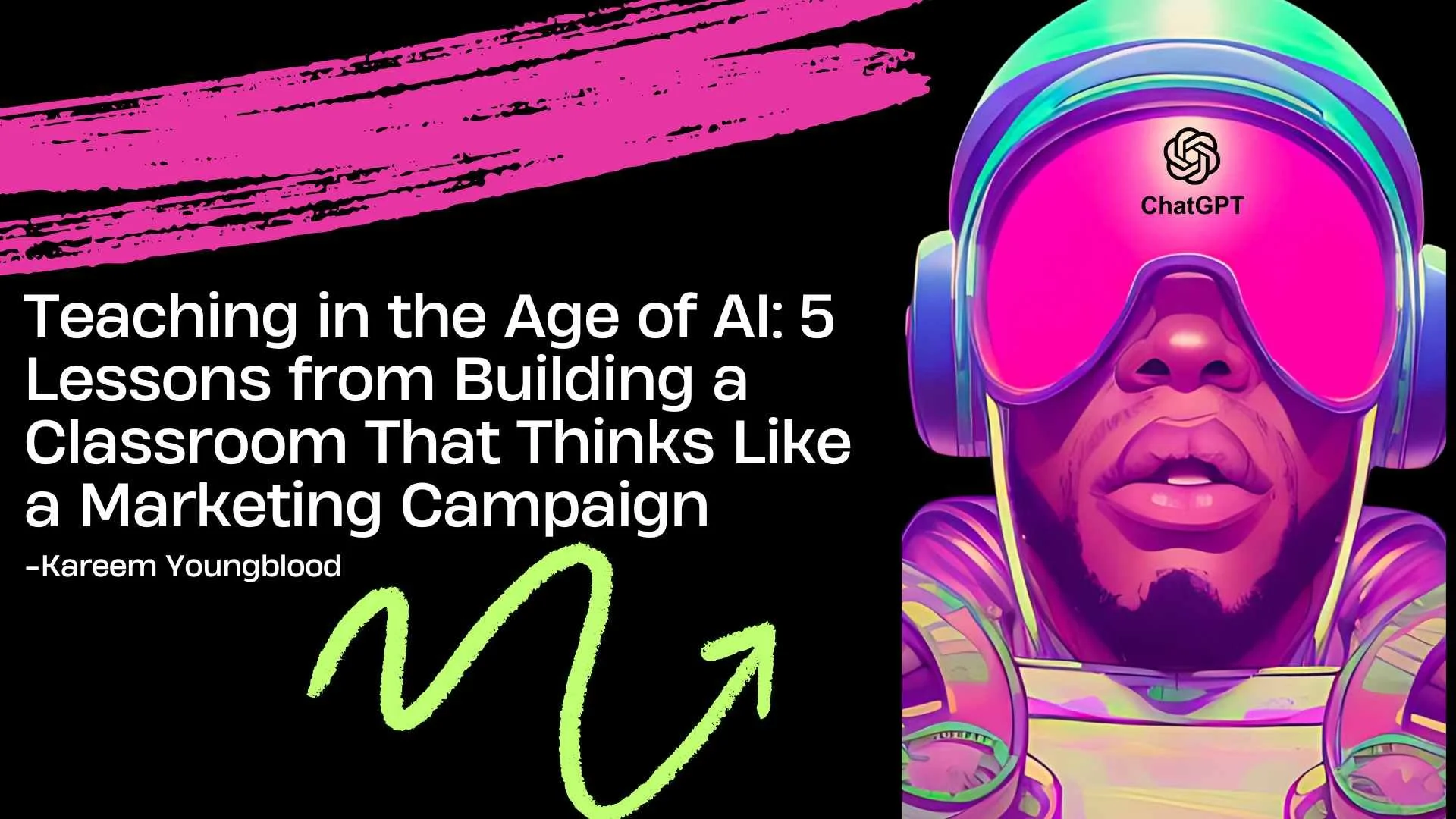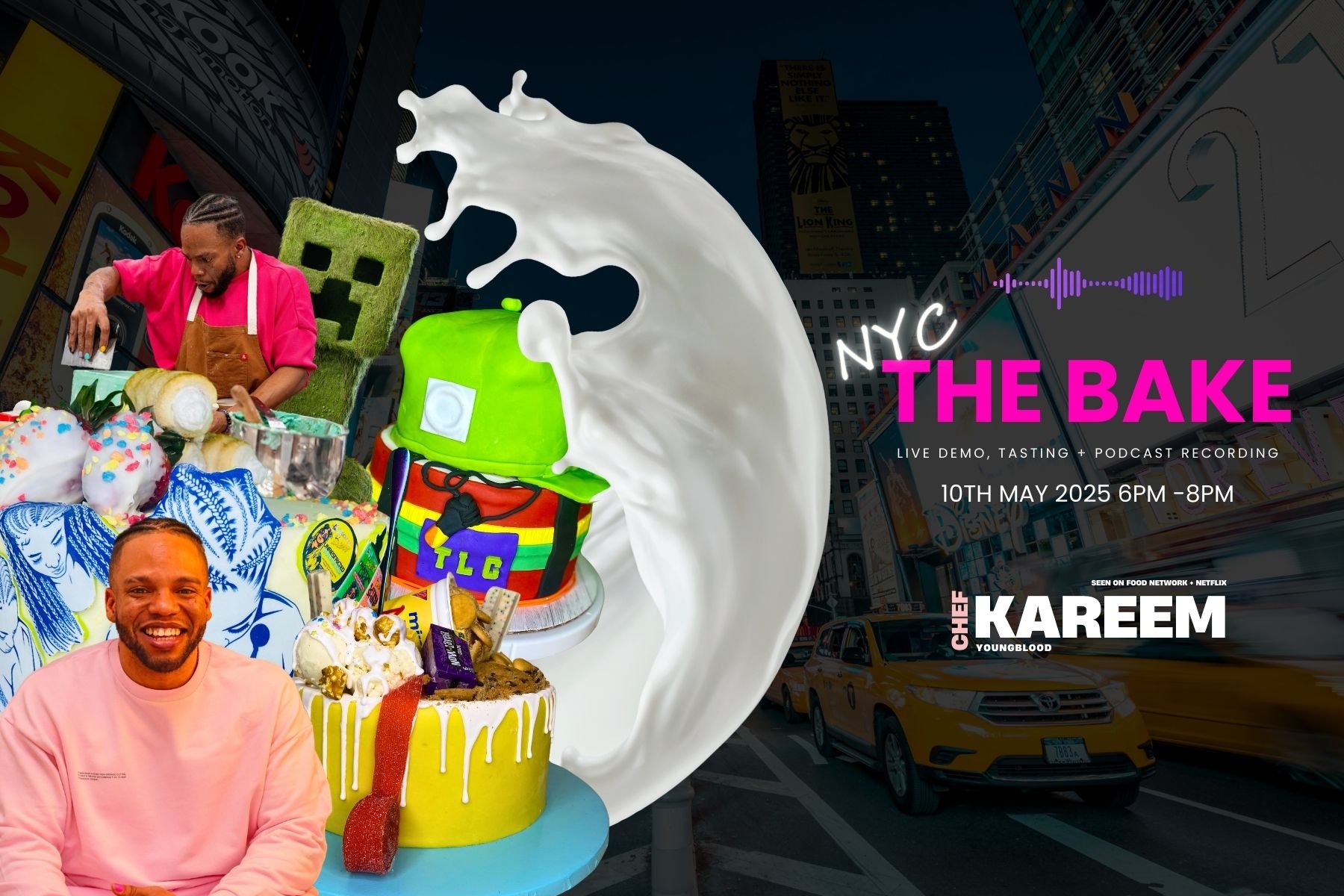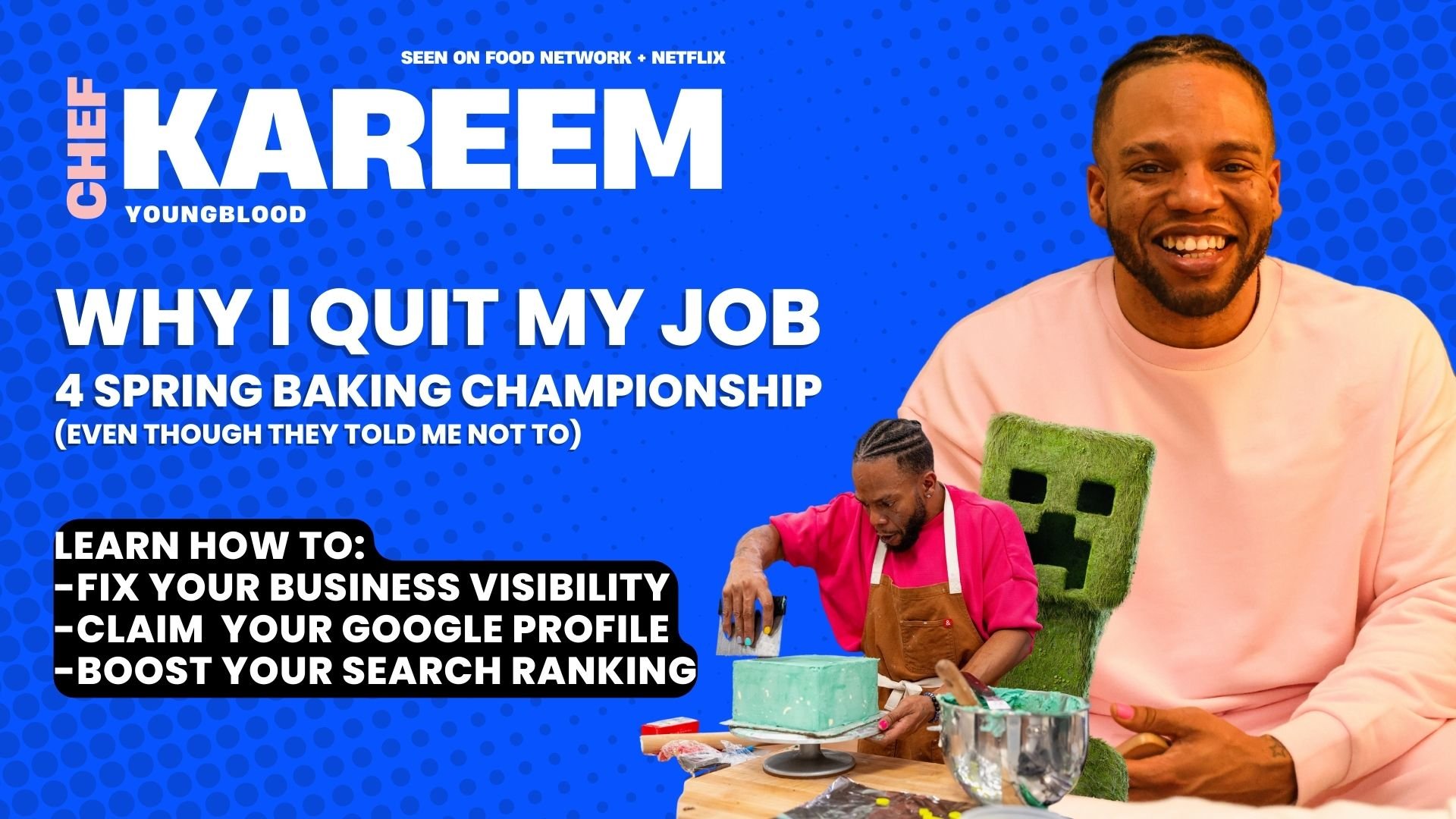
I’m Kareem Youngblood — baker, teacher, and storyteller. Seen on Food Network and
Netflix, shaped by Brooklyn, and still learning out loud.
Explore, taste, and build something with me.

5 Lessons on Teaching in the Age of AI
In today’s AI-powered classrooms, data isn’t just for marketers—it’s how students learn. Discover how Kareem Youngblood built a digital marketing course that runs like a real campaign, using dashboards, analytics, and empathy to turn Gen Z learners into data storytellers.

Ombré Blue Blueberry No-Bake Cheesecake | Food Network Feature

How to fry chicken: My Family’s Fried Chicken
Lets fry some chicken! Soul food is a living recipe — absorbing a rhythm so deeply you could cook it with your eyes closed. The “instructions” might not look like a recipe at all. They might just say: Cook it until it smells like Sunday.

Introducing #HashFAIL: Chef YoungBrody

The Bake NYC: Behind the Scenes

Culinary Evolution: Blending Tradition, Culture, and Class
Chef Kareem Youngblood, as seen on Food Network and Netflix, smiles while seated next to a colorful plated dessert — his signature TropiKool Slice. The text overlay reads: “Culinary Evolution: Tradition, Class, and Cultural Crossroads.” A highlighted quote emphasizes the overlooked influence of home cooks, indigenous communities, and marginalized chefs in fine dining. The image blends modern design with cultural depth, representing Kareem’s mission to reclaim and redefine gourmet culinary spaces through lived experience and fusion baking.

Color Code Challenge: A Mental Health Movement in Full Color
Join NYC-based baker Kareem Youngblood—best known for his appearance on Spring Baking Championship—as he launches #TheColorCodeChallenge, a powerful movement for Mental Health Awareness Month. Sparked by online hate and the bullying of a young boy who wore nail polish, Kareem is using his platform to fight back with joy, self-expression, and unity. This blog post explores the reality of men wearing nail polish, why creative freedom matters, and how color can be used as a tool for healing and visibility. Learn how to join the challenge, discover the meaning behind the colors Royal Purple, Gold, and Mango Tango, and be part of a movement that’s as bold as the baker behind it.

The Bake with Kareem Youngblood: Sweets, Storytelling & Soul
Food Network’s Spring Baking Championship contestant Kareem Youngblood brings you THE BAKE — a live dessert demo, tasting, and podcast experience at NY Cake in NYC on May 10, 2025.
Celebrate Kareem’s belated 40th birthday with sweets, storytelling, and an open bar for all. Featuring his top dessert from Spring Baking Championship, a $150 NY Cake class raffle, Sugarfina gift sets, Ray-Ban Meta glasses giveaway, and more.
🎟️ Early bird tickets are live: https://kareemyoungblood.com/the-bake-nyc

Church Lady Cake: Yellow Cake with Chocolate Frosting
Church Lady Cake Recipe by Kareem Youngblood
As Seen on Food Network’s Spring Baking Championship
Welcome to The Cupka’ak Bar by Kareem Youngblood, a Brooklyn-born baker featured on Food Network’s Spring Baking Championship, Chopped Sweets, and Netflix’s Sugar Rush. This yellow cake with rich chocolate frosting—affectionately named Church Lady—is more than just a recipe. It’s a memory, a mood, and a tribute to the women who made Sundays sacred.

Embracing the Spotlight: How Engagement Fuels Growth
From TV screens to trending searches, Kareem Youngblood breaks down how real engagement fuels real growth. Learn how to track your name, measure reach, and turn critique into clicks — all while serving heart, hustle, and sustainable style with PANGAIA. Because life is messy, but it’s still sweet.

WTF is SEO?
Search Engine Optimization (SEO) doesn’t have to be complicated. In this blog post, we break down the basics in plain language—no tech background needed. From understanding what SEO is and why it matters, to indexing, keyword research, writing SEO-friendly content, optimizing your pages, building backlinks, and tracking your progress—this guide covers everything you need to get seen online. Whether you're a small business owner, creative, or just trying to grow your brand, this is your no-BS introduction to getting found on Google.

Two Weeks with Julian: From Spring Baking Championship
After we wrapped each day, we only had each other. Nobody else could really understand what we were going through. Julian and I would meet up in the garden at the end of the day to just let it all out.
When you get home, it’s like coming back from war. You’re living with this weird kind of PTSD, and the only people who truly get it are the ones who were there with you. Julian, myself, and a few others went through our own versions of post-show depression.

I Quit My Job 4 Spring Baking Championship!
What happens when you bet on yourself—even when everyone tells you not to? In this post, I break down why I quit my job for Spring Baking Championship, the risks I took, and how I turned it into a major career move. Plus, I’m dropping game on how to fix your business visibility online so customers can actually find you. If you’ve ever felt stuck between security and chasing your dream, this one’s for you.

“How U DOIN” Sherri
From daydreaming about a Wendy Williams Show moment to bringing cupcakes to The Sherri Show—this is a full-circle moment I never saw coming! 🍰✨ Wendy was the icon who made you famous with just a How U Doin’?, and Sherri? She’s got me dreaming all over again! From Facebook connections to VIP moments, this journey has been WILD. And yes, I’d 100% get ‘And we had CupKA’AKs’ tattooed if Sherri writes it for me! 😂🎤
Read the full story to see how it all unfolded!

10 Tips for Creative Caregivers: Balancing Care and Creativity
10 Tips for Caregiver Creators: Balancing Caregiving and Creativity
Taking care of a loved one while trying to pursue your creative work isn’t easy—trust me, I’ve been there. Before home hospice started for my grandpa, I had to find ways to make it all work. Cooking, cleaning, caregiving, and still making space for my dreams. It’s overwhelming, but possible. If you’re a creator balancing caregiving, here are 10 tips that helped me keep going:

My Cake Isn’t from the Nether: Hear Me Out!
Defending My Warped Forest Cake: A True Minecraft-Inspired Creation in Spring Baking Championship Episode 2

Spring Baking Championship A Minecraft Movie
Another wild episode—back-to-back two-hour challenges? Insane. Out of 11 seasons, we were the first to have two of them in a row, which is pretty huge. Was it hard? 100%.
Jesse Palmer had us making Minecraft-inspired square fruit entremets, each featuring an assigned fruit to create geometric, visually striking desserts. Then, we teamed up to bring A Minecraft Movie to life with landscape cakes—one baker representing the Overworld, the other the Netherworld—all connected by an edible portal that tied the worlds together in both design and taste.

From a Brooklyn 2 Food Network:
From the heart of Brooklyn to the national stage, Kareem Youngblood’s journey to Spring Baking Championship is a testament to resilience, passion, and family legacy.
